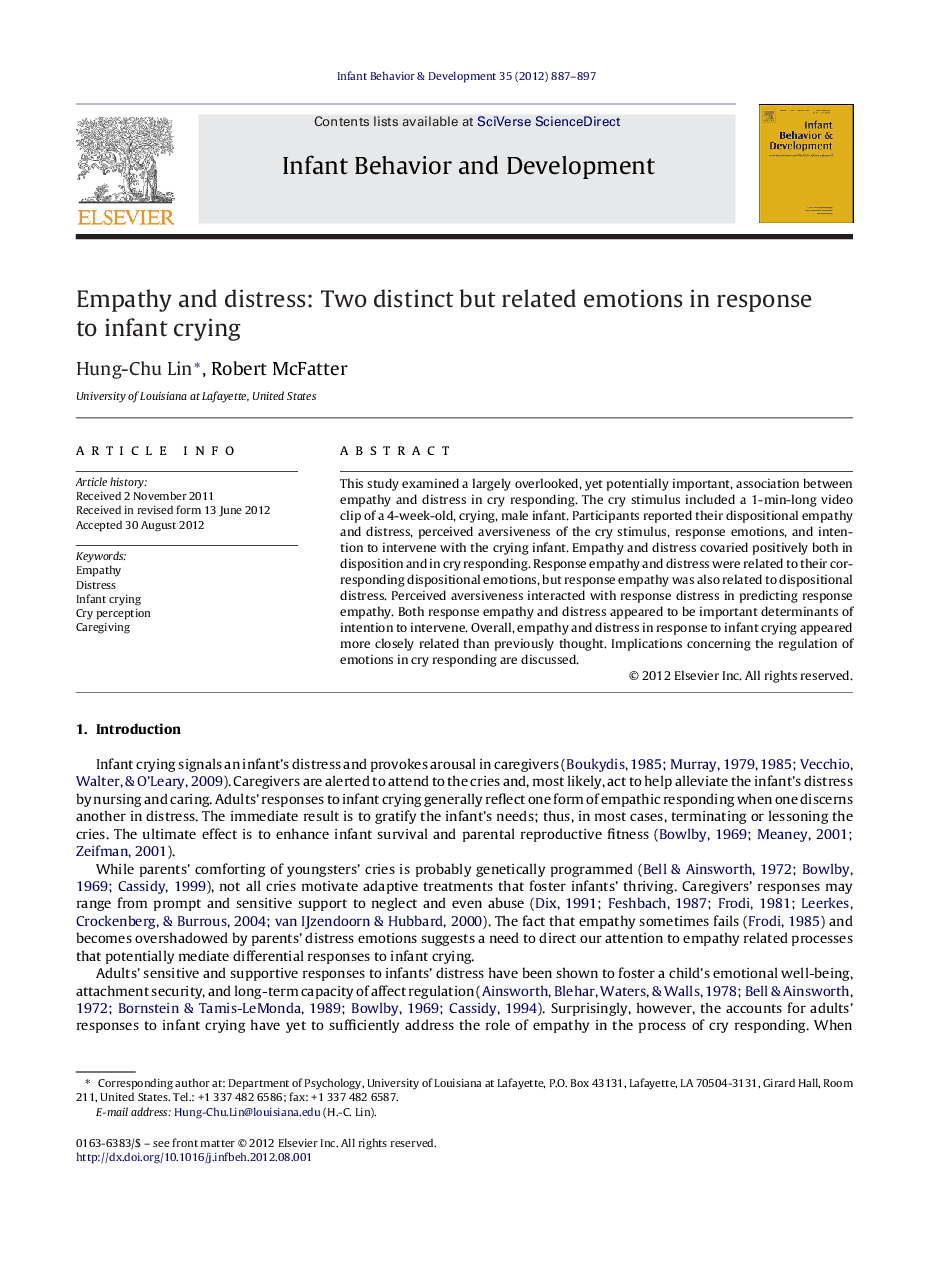| Article ID | Journal | Published Year | Pages | File Type |
|---|---|---|---|---|
| 917378 | Infant Behavior and Development | 2012 | 11 Pages |
This study examined a largely overlooked, yet potentially important, association between empathy and distress in cry responding. The cry stimulus included a 1-min-long video clip of a 4-week-old, crying, male infant. Participants reported their dispositional empathy and distress, perceived aversiveness of the cry stimulus, response emotions, and intention to intervene with the crying infant. Empathy and distress covaried positively both in disposition and in cry responding. Response empathy and distress were related to their corresponding dispositional emotions, but response empathy was also related to dispositional distress. Perceived aversiveness interacted with response distress in predicting response empathy. Both response empathy and distress appeared to be important determinants of intention to intervene. Overall, empathy and distress in response to infant crying appeared more closely related than previously thought. Implications concerning the regulation of emotions in cry responding are discussed.
► Empathy and distress in response to infant crying were examined. ► Empathy and distress covaried positively both in disposition and in cry responding. ► Perceived aversiveness interacted with response distress in predicting response empathy. ► Both response empathy and distress appeared to be important determinants of intention to intervene.
